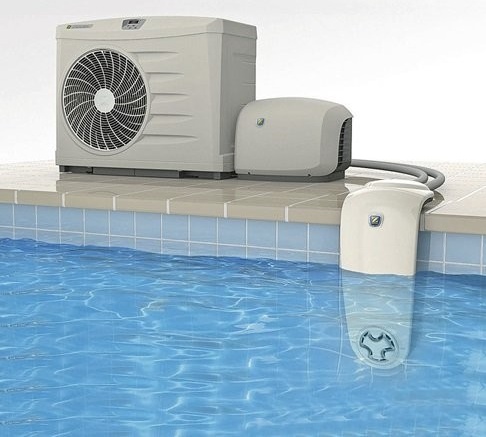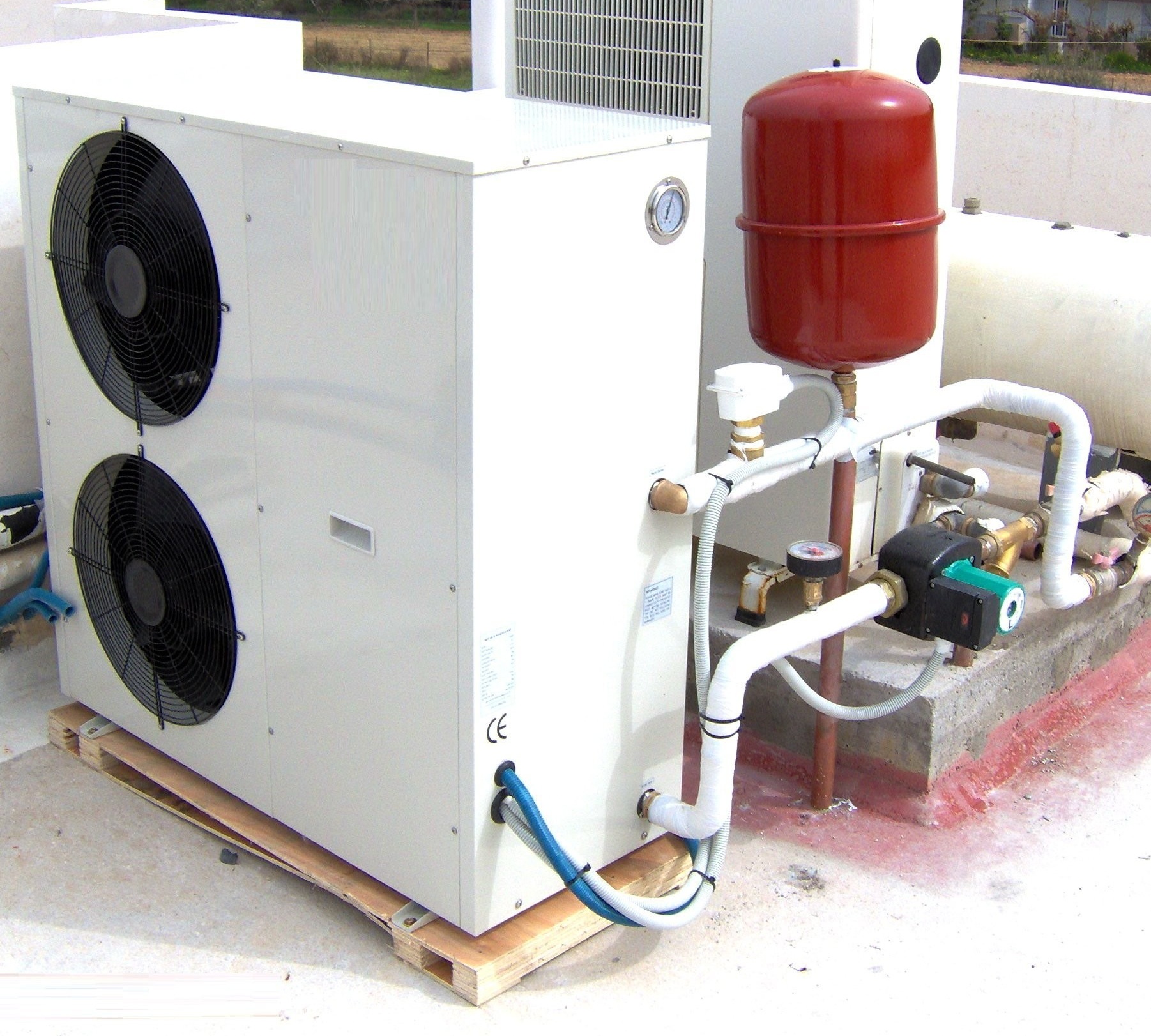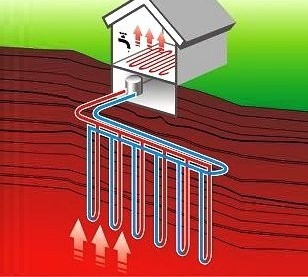Air-to-air heat pump system overview: “air conditioning for heating”
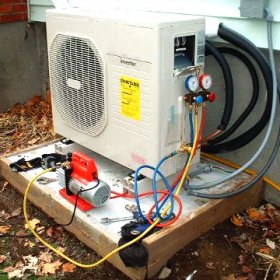
Among the options for alternative heating, the heat pump air-air is considered the most efficient and least expensive. For such a system, no complicated work is required to excavate the soil or to drill special wells outside, or to install expensive radiators of traditional water heating inside the house. If desired, and with some skill, such a heat pump can be done independently, saving an amount equivalent to a couple of thousand dollars.
Content
How does an air heat pump work?
To a person new to physics and thermodynamics, the idea of an air heat pump may seem absurd. Is it really possible at outdoor temperature significantly below zero to heat the air in the house to an acceptable level? This is really possible, which is why industrial models of a wide variety of heat pumps have been sold quite successfully for more than a decade. The main drawback of factory models is the very high price.
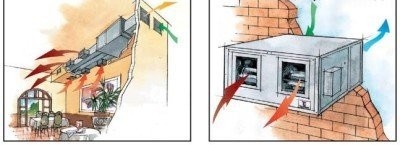
All objects surrounding a person contain a certain amount of thermal energy. Even at 20 degrees of frost in the air there is low potential thermal energy. An air heat pump collects this dissipated energy and, figuratively speaking, concentrates it, then heating the heat carrier. In our case, again, air flows circulating inside the house will be used for heating.
An important element of such a system is the refrigerant, i.e., a substance with a very low boiling and evaporation temperature. Most often, Freon gas is used in this capacity, the same as in a refrigerator or a conventional air conditioner. But if in these devices the refrigerant removes heat and transfers it to the environment, then in the heat pump it collects the heat contained in the air and transfers it to the house.
The cycle of converting low-potential thermal energy to high-potential energy can be described as follows:
- The fan pumps external air into the chamber with the evaporator.
- The refrigerant inside the evaporator heats up and goes into a gaseous state.
- In the form of gas, the refrigerant enters the compressor and is additionally heated, exposed to high pressure.
- Then the refrigerant is transferred to the condenser, where it loses the received energy and returns to the liquid state again.
- The resulting heat is used to heat the house.
- The liquid refrigerant is returned to the evaporator.
To increase the efficiency of the device, it is recommended to use a special throttle valve between the condenser and the evaporator. This cycle, called the inverse Carnot principle, repeats itself again and again.To automate the process, an automatic control unit is included in the circuit.
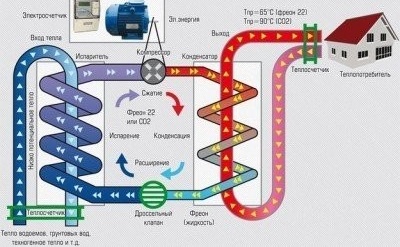
This diagram illustrates the principle of operation of the air-to-air heat pump. The low potential energy of the outdoor air is converted into heat energy with high potential
How to heat a house with air?
Interesting experience in using an air-to-air heat pump is presented in the following video:
To effectively heat the house with the help of air, it is necessary to perform three stages of work:
- Ensure that the outside air necessary for the operation of the heat pump is drawn.
- Assemble individual parts of the heat pump in a single device.
- Create an air heating system at home.
A powerful fan is used to provide outside air. It can be installed directly against the wall of the building or at some distance by choosing a suitable place in the courtyard of a private house. It is recommended to place the fan in an open space with good airflow. Air will enter the house through special pipelines. If the fan is installed in the yard, then you will need to conduct two pipelines: for air intake from the outside and for reverse air flow. Typically, pipes are laid in a trench dug in the ground (at the same time they need to be insulated), or they are let directly through the wall.
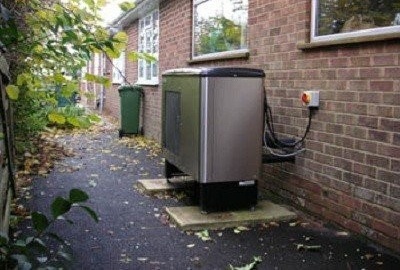
The outdoor unit of the air-to-air heat pump can be placed in a suitable place with good airflow: near the wall of the house or even on its roof
How to make such an assembly yourself?
Typically, air-to-air heat pumps consist of a number of devices, such as an evaporator, compressor, and condenser. For the manufacture of the evaporator, you can use a large plastic tank, the recommended capacity is 100-120 liters. A coil from a copper pipe is inserted inside this tank, through which refrigerant will circulate. To make a coil, use a suitable cylinder, most often it is a gas cylinder. The pipe is wound on a cylinder, and in order to maintain the correct step between the turns of the coil, an aluminum perforated rail is used. In addition, in a plastic container, you need to make holes for supplying and removing external air. The evaporator coil can easily fit into a smaller capacity, however, for this it will be necessary to make more turns of a smaller diameter, which greatly complicates the work and adversely affects its quality.
Another copper coil will be needed for the capacitor. This element is usually made of a metal tank, which will have to be cut and then brewed. A copper coil for the refrigerant is also inserted inside and holes are made through which the indoor air will flow and discharge. Work is carried out using a welding machine.
One of the most important elements of the system is a compressor. To make this element yourself is quite problematic, therefore, industrial models are usually used. The budget option to solve the problem is to remove the working compressor from the damaged split system. Typically, the power of such compressors is perfect for home-made heat pumps, and the remaining resource is enough for many years of operation.
After all the elements are ready, you should:
- Connect them together.
- Fill the system with refrigerant.
- Connect the evaporator to the outdoor air intake system.
- Connect the condenser to the heating system of the house.
Refrigerant charge is a difficult and responsible stage of work. To accomplish this task, it is better to invite an experienced refrigeration master. He will not only fill the freon with the heat pump, but also help to check the quality of the device.
Arrangement of an air heating system
Air heating is better suited for use with a heat pump than traditional water systems with bulky and expensive radiators, since in this case there is no need to heat the coolant to a very high temperature. Heated air is distributed in the living room through a duct system. This eliminates quite significant heat loss, which is inevitable when transporting hot water.
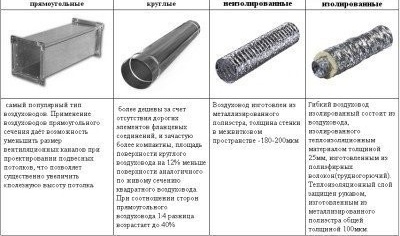
Various types of air ducts can be used for the air-to-air heat pump, most often these are reliable galvanized steel structures
Heated air from the heat exchanger enters the filter, and then into the duct system. At the same time, a certain amount of outside air is mixed with it. This ensures not only heating the room, but also the correct air exchange.
Of course, to transport warm air, you need a sufficiently powerful fan. Air ducts are usually laid along the walls of rooms, and warm air comes from the supply grilles, which are advisable to place near the windows. In addition, the system is equipped with thermostats that allow you to adjust the heating of the premises in automatic mode.
For mounting air heating system have to stock up:
- special air ducts;
- a set of supply grilles;
- reinforced aluminum tape;
- a set of fasteners;
- tool for working with galvanized steel.
Both rigid and flexible ducts have been used successfully for transporting hot air. For rigid structures, additional bends will be needed to deploy the direction of air flow at the required angle (45 or 90 degrees).
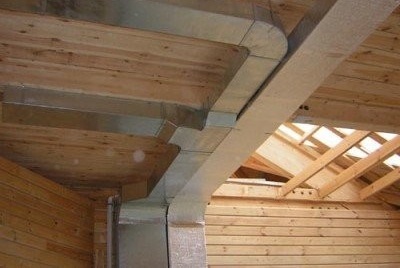
If you plan to install air heating even at the stage of building a house, you can hide the air ducts in the wall or under the false ceiling. Otherwise, they are covered with special decorative elements.
It is best to mount the duct system at the stage of building a house. Then they can be built right into the walls. If the decision is made later, air ducts are placed along the walls and hide them with decorative grilles.
